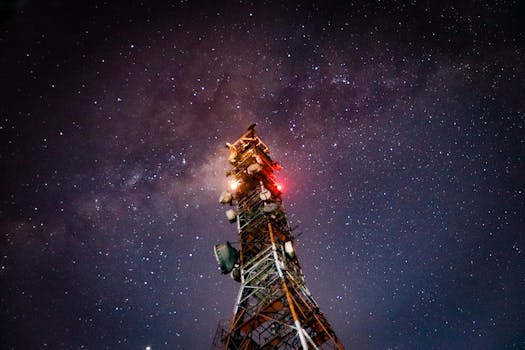Starlink: Revolutionizing Global Internet Connectivity with High-Speed Satellite Internet

Starlink: Revolutionizing Global Internet Connectivity with High-Speed Satellite Internet
Starlink is a satellite constellation developed by SpaceX, a private aerospace manufacturer and space transport services company founded by Elon Musk. The project aims to provide high-speed, low-latency internet connectivity worldwide, bridging the digital divide and transforming the way we communicate. With its ambitious goals, Starlink has the potential to revolutionize the global internet landscape, making it more accessible, affordable, and reliable for people around the world.
How Starlink Works
Starlink uses a constellation of low-Earth orbit (LEO) satellites to provide internet connectivity. The satellites are launched into orbit at an altitude of approximately 550 kilometers, which is much lower than traditional geostationary satellites. This lower altitude enables faster data transfer and lower latency, resulting in a more responsive and reliable internet connection. The satellites are equipped with advanced technology, including phased array antennas and high-gain antennas, which allow them to communicate with user terminals on the ground and other satellites in the constellation.
The user terminals, also known as Starlink dishes, are small, compact devices that can be installed at homes, offices, or other locations. These terminals use advanced beamforming technology to communicate with the satellites, ensuring a stable and high-speed internet connection. The terminals are also equipped with GPS and other sensors to enable precise tracking and communication with the satellites.
Benefits of Starlink
Starlink offers several benefits, including global coverage, high-speed internet, low latency, and mobility. The satellite constellation can provide internet connectivity to remote and underserved areas, where traditional fiber-optic or cable-based internet is not available. This can help bridge the digital divide, enabling people in these areas to access essential services, such as education, healthcare, and financial services.
Starlink also offers high-speed internet, with speeds of up to 1 Gbps, making it suitable for demanding applications, such as online gaming, video streaming, and cloud computing. The low latency of the Starlink network, which is typically around 20-30 ms, also makes it ideal for real-time applications, such as video conferencing and online gaming.
Challenges and Future Developments
While Starlink has made significant progress, there are still several challenges to overcome. One of the major challenges is the high cost of launching and maintaining the satellite constellation. SpaceX has already launched over 2,000 satellites, and the company plans to launch thousands more in the coming years. The cost of launching these satellites is estimated to be around $10 billion, which is a significant investment for any company.
Another challenge is the regulatory environment. Starlink needs to comply with regulations in various countries, which can be complex and time-consuming. The company has already faced regulatory hurdles in some countries, and it needs to work with governments and regulatory bodies to ensure that its services comply with local laws and regulations.
Despite these challenges, Starlink has a promising future. The company is continuously improving its technology and expanding its services. SpaceX has announced plans to launch a new generation of satellites, which will offer even faster speeds and lower latency. The company is also working on developing new user terminals, which will be more compact and affordable, making it easier for people to access the Starlink network.




